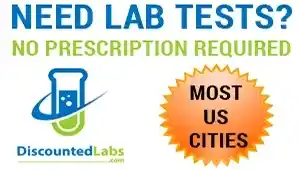madman
Super Moderator
a b s t r a c t
Major thermal injury induces profound metabolic derangements secondary to an inflammatory “stress-induced” hormonal environment. Several pharmacological interventions have been tested in an effort to halt the hypermetabolic response to severe burns. Insulin, insulin growth factor 1, insulin growth factor binding protein 3, metformin, human growth hormone, thyroid hormones, testosterone, oxandrolone, and propranolol, among others, have been proposed to have anabolic or anticatabolic effects. The aim of this broad analysis of pharmacological interventions was to raise awareness of treatment options and to help establishing directions for future clinical research efforts. A PubMed search was conducted on the anabolic and anticatabolic agents used in burn care. One hundred and thirty-five human studies published between 1999 and 2017 were included in this review. The pharmacological properties, rationale for the treatments, efficacy considerations and side effect profiles are summarized in the article. Many of the drugs tested for investigational purposes in the severely thermally injured are not yet gold standard therapies in spite of their potential benefit. Propranolol and oxandrolone have shown great promise but further evidence is still needed to clarify their potential use for anabolic and anticatabolic purposes.
4. Conclusion
The metabolic repercussions of severe thermal injury can be devastated both acutely and in the long-term. Exaggerated inflammatory response, overstimulation of the sympathetic nervous system, hypercatabolism, insulin resistance and hyperglycemia are particular aspects of this syndrome that cause major consequences to the burned patients. Many pharmacological strategies have been tried to ameliorate this condition, either by antagonizing the b-adrenoreceptor stimulus (anticatabolism) or reversing the negative net protein balance (anabolism).
Most of the drugs tested for research purposes are not yet established clinical therapies in spite of their potential benefit Propranolol and oxandrolone have shown great promise but are not yet considered to be standard-of-care therapy.
Propranolol may be an effective adjunct to decrease thermal injury catabolism in pediatric patients. It has been shown to decrease cardiac work, REE, and lipolysis. It has also been demonstrated to increase skeletal muscle synthesis, reversing the catabolic shift induced by severe burns. Further evidence in adult and elderly burned patients is still needed to clarify its potential use for all thermally injured populations.
Treatment with oxandrolone during the acute phase of burn injuries does not affect mortality or risk of infection, but it has been demonstrated to shorten length of hospital stay, skin graft donor-site healing time, time between surgical procedures and weight and nitrogen loss. It is also beneficial during the rehabilitation phase, showing shortened length of hospital stay, decreased weight loss, and gain in lean body mass at 6 and 12 months postburn. Moreover, the drug is orally available, has a tolerable adverse effects profile, and is effective for both children and adults.
Further research efforts should focus on the understanding of the synergistic effects of the association of propranolol and oxandrolone. The combination of effective sympathetic nervous system antagonism and positive net protein balance may be the cornerstone of the treatment for the burn-induced hypermetabolic syndrome.
Major thermal injury induces profound metabolic derangements secondary to an inflammatory “stress-induced” hormonal environment. Several pharmacological interventions have been tested in an effort to halt the hypermetabolic response to severe burns. Insulin, insulin growth factor 1, insulin growth factor binding protein 3, metformin, human growth hormone, thyroid hormones, testosterone, oxandrolone, and propranolol, among others, have been proposed to have anabolic or anticatabolic effects. The aim of this broad analysis of pharmacological interventions was to raise awareness of treatment options and to help establishing directions for future clinical research efforts. A PubMed search was conducted on the anabolic and anticatabolic agents used in burn care. One hundred and thirty-five human studies published between 1999 and 2017 were included in this review. The pharmacological properties, rationale for the treatments, efficacy considerations and side effect profiles are summarized in the article. Many of the drugs tested for investigational purposes in the severely thermally injured are not yet gold standard therapies in spite of their potential benefit. Propranolol and oxandrolone have shown great promise but further evidence is still needed to clarify their potential use for anabolic and anticatabolic purposes.
4. Conclusion
The metabolic repercussions of severe thermal injury can be devastated both acutely and in the long-term. Exaggerated inflammatory response, overstimulation of the sympathetic nervous system, hypercatabolism, insulin resistance and hyperglycemia are particular aspects of this syndrome that cause major consequences to the burned patients. Many pharmacological strategies have been tried to ameliorate this condition, either by antagonizing the b-adrenoreceptor stimulus (anticatabolism) or reversing the negative net protein balance (anabolism).
Most of the drugs tested for research purposes are not yet established clinical therapies in spite of their potential benefit Propranolol and oxandrolone have shown great promise but are not yet considered to be standard-of-care therapy.
Propranolol may be an effective adjunct to decrease thermal injury catabolism in pediatric patients. It has been shown to decrease cardiac work, REE, and lipolysis. It has also been demonstrated to increase skeletal muscle synthesis, reversing the catabolic shift induced by severe burns. Further evidence in adult and elderly burned patients is still needed to clarify its potential use for all thermally injured populations.
Treatment with oxandrolone during the acute phase of burn injuries does not affect mortality or risk of infection, but it has been demonstrated to shorten length of hospital stay, skin graft donor-site healing time, time between surgical procedures and weight and nitrogen loss. It is also beneficial during the rehabilitation phase, showing shortened length of hospital stay, decreased weight loss, and gain in lean body mass at 6 and 12 months postburn. Moreover, the drug is orally available, has a tolerable adverse effects profile, and is effective for both children and adults.
Further research efforts should focus on the understanding of the synergistic effects of the association of propranolol and oxandrolone. The combination of effective sympathetic nervous system antagonism and positive net protein balance may be the cornerstone of the treatment for the burn-induced hypermetabolic syndrome.
Attachments
Last edited:












